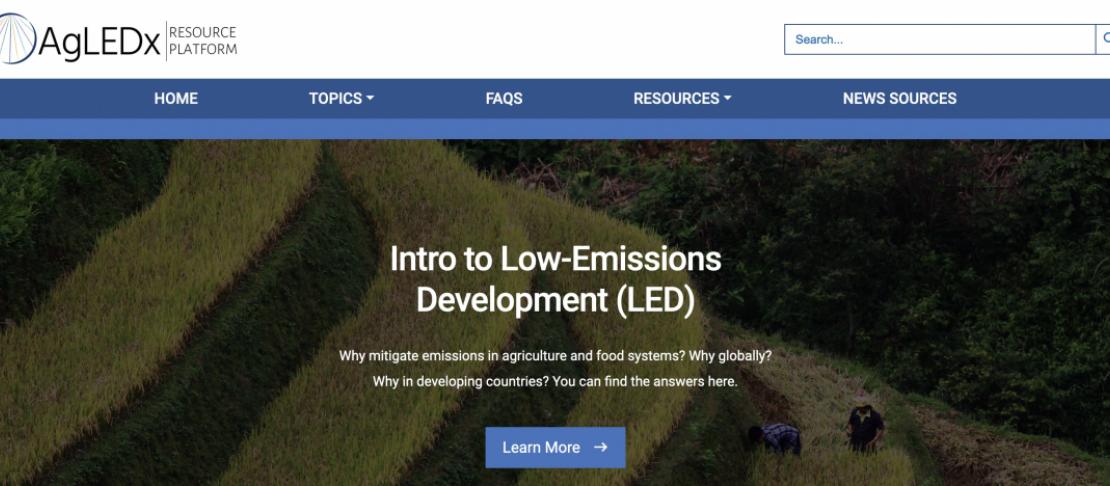AgLEDx Resource Platform: Low-Emissions Development for Agriculture

Understanding the intricacies of climate change mitigation in the agriculture sector can be tedious and it can be hard to find relevant information. Open access guidance to technical information and introductory materials are lacking, especially guidance relevant to developing nations. The new AgLEDx Resource Platform aims to fill this gap.
Global food systems contribute about one-third of global greenhouse gas (GHG) emissions, and agriculture accounts for over half of these emissions and is expected to nearly double by 2050. Research has shown emissions reductions in other sectors alone will be insufficient to meet the policy targets of the Paris Agreement, making mitigating agricultural emissions and sequestering carbon critical to achieving the 1.5 ˚C and 2 ˚C targets.
There are ways to reduce agriculture emissions that achieve food security and are consistent with the UN Sustainable Development Goals (SDGs). Agricultural low-emissions development (LED) is an approach to mitigation that recognizes the need to achieve food security and other development aims in low- and middle-income countries but in ways that also minimize GHG emissions.
Emissions from food systems vary widely by country and can be anywhere from 14-98% of national emissions, which requires locally relevant mitigation action. There is no silver bullet to mitigating agricultural emissions, and each farming system, country, town and farmer will need a different approach.
Purpose
AgLEDx is intended to be a guide to climate change mitigation in agriculture and food systems for those new and old in the field of low-emissions development (LED).
The focus of this Platform is on agricultural emissions and their mitigation, but we provide examples and resources of emissions and mitigation options related to activities connected with agriculture. One of the biggest opportunities and challenges is in developing countries, where food security has yet to be met while also seeking to reduce emissions. Therefore, this site emphasizes developing country data and examples.
Targeted users of this site range from those completely unfamiliar with climate change mitigation in agriculture to those seeking to expand their knowledge in a particular subsector. We provide a comprehensive glossary and FAQ, as well as frequently used technical information as basic references throughout the LED Options, Estimating Emissions and Policy & Planning sections. References are provided in in-text hyperlinks and on the Resource page.
Emissions and technical options will change over time and some of the data included in this website will be time-specific, so some data may need updating. If you find out-of-date data, please let us know by using our contact form.